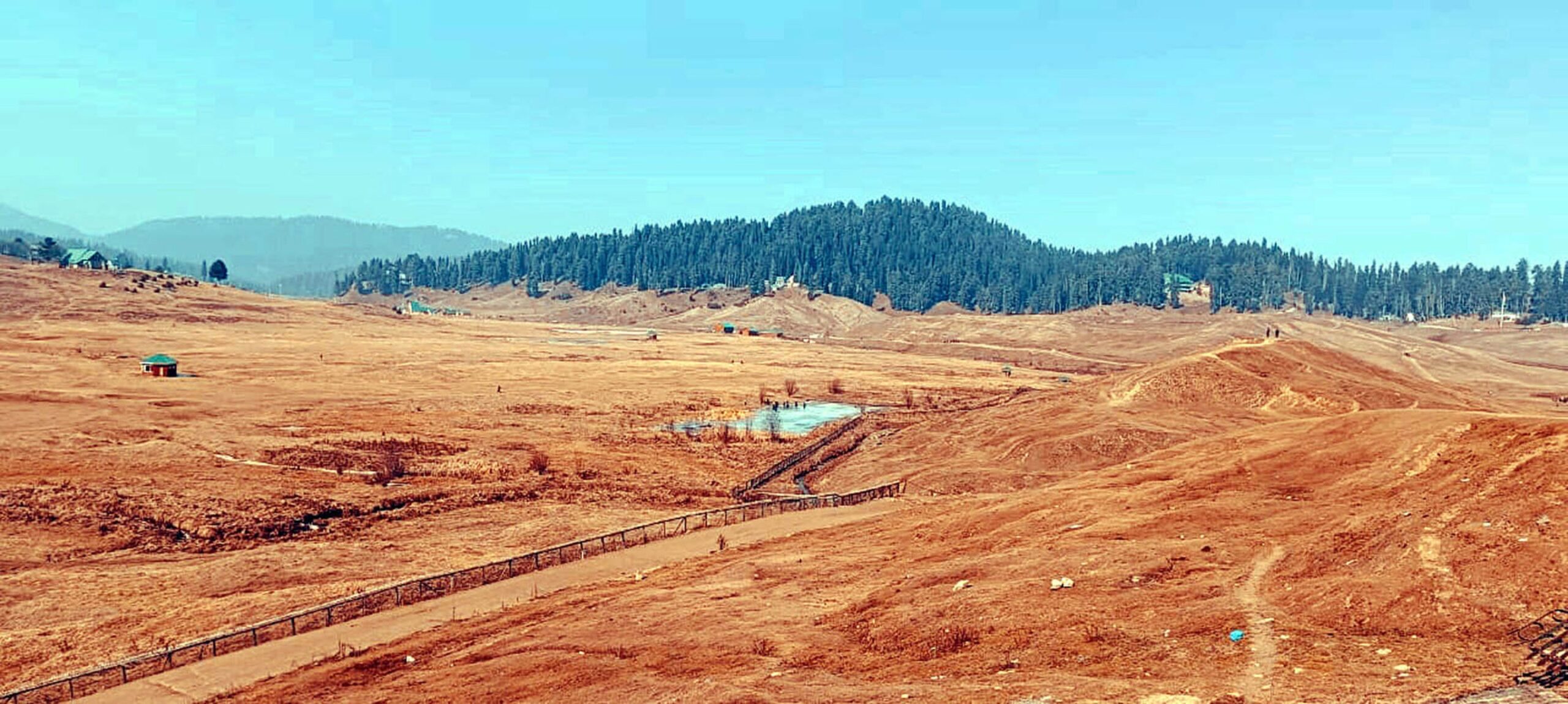NASIR ALI
Srinagar: Kashmir, renowned for its breathtaking landscapes and serene beauty, is currently grappling with a severe crisis as a prolonged dry spell has set ablaze numerous bushfires across the region. The situation is dire, with the flames engulfing vast expanses of forests, posing threats to both human habitation and the delicate ecosystem.
According to officials in past one month more than 50 forest fires were reported in three forest circles of Kashmir -South, Srinagar and North, causing damage to trees, bushes. Most of the fires were reported in north and south divisions of the Valley. At least dozens of fires have been reported in the last 10 days across the valley.
Sofar, the bushfire has broke out in Karanu area of Karnah, Devpora in South Kashmir’s Shopian, Wurandore in Manzgam area of Kulgam, Kangan in Ganderbal, Salamabad in Uri, Sumlar in north Kashmir’s Bandipora, Nagawadi in Tral, Rampora Rajpora in Sopore, Kuntwara Range in Doda among other places.
Director Meteorological department, Dr Mukhtar Ahmad Khan told that the bushfire is the outcome of the persistent dry spell in Kashmir. “Such incidents have been witnessed in the past as well,” he said.
Pertinently, the water level in the Jhelum River has hit the lowest due to a prolonged dry spell in Kashmir, officials on Sunday said.
“River Jhelum was flowing at -0.75 feet at Sangam (Anantnag district) and -0.86 feet at Asham (Bandipora district) on Sunday morning. This is the lowest water level in the river,” the officials said.
It had dropped to this level at Sangam in November 2017, they said.
The primary catalyst for the rampant bushfires in Kashmir is the unprecedented dry spell that has gripped the region. The lack of precipitation, coupled with soaring temperatures, has created an environment conducive to the ignition and rapid spread of fires. Climate change exacerbates this problem, as rising global temperatures contribute to the frequency and intensity of droughts, making regions like Kashmir more susceptible to devastating wildfires.
The consequences of the bushfires in Kashmir are multifaceted and deeply concerning. Firstly, the immediate threat to human life and property is imminent. As the fires rage on, residential areas are at risk of being engulfed, leading to potential displacement of communities and loss of livelihoods. Moreover, the inhalation of smoke and pollutants emitted during the wildfires poses severe health risks, particularly for vulnerable populations.
In the meantime, the fire and emergency services department has issued advisory to prevent forest fire. They include avoiding open flames, reporting suspicious activities, adhering to fire restrictions, planning outdoor activities carefully, and reporting fires immediately.
Adhering to the advisory can help avoiding forest fire. Keeping forests safe from any further damage is a collective responsibility, which needs to be taken seriously.
Beyond the human impact, the biodiversity of Kashmir’s unique ecosystems is at stake. Forests, home to diverse flora and fauna, are being ravaged, leading to the loss of habitat for numerous species. This not only disrupts the delicate balance of the ecosystem but also jeopardizes the region’s rich biodiversity, some of which may be endemic and endangered.
Addressing the fire crisis in Kashmir requires a multifaceted approach that encompasses both preventive and responsive measures. The foremost priority is the implementation of effective fire prevention strategies. This involves strict enforcement of regulations against activities that can ignite fires, such as slash-and-burn agriculture, and promoting responsible behavior in outdoor settings.
Investing in early detection and rapid response mechanisms is crucial to mitigate the impact of bushfires. Utilizing satellite technology, drones, and other advanced tools for monitoring and surveillance can aid in identifying and extinguishing fires in their nascent stages. Additionally, community engagement and awareness programs can empower local residents to play an active role in fire prevention and reporting.
Long-term measures should focus on climate change mitigation and adaptation strategies. This involves advocating for sustainable land management practices, afforestation initiatives, and reducing carbon emissions to mitigate the impact of global warming. Collaborative efforts at regional and international levels are essential to address the root causes of the changing climate.
Urgent and coordinated action is imperative to safeguard lives, protect biodiversity, and preserve the economic well-being of the region. Through a combination of preventive measures, early detection systems, and a commitment to addressing climate change, Kashmir has the opportunity to rise from the ashes and build a resilient and sustainable future.
IMAGE CAPTION: A view of world famous #ski_resort of #Gulmarg as Kashmir valley continues to be in the grip of #dry_weather, on Monday.



